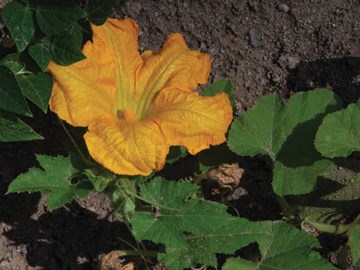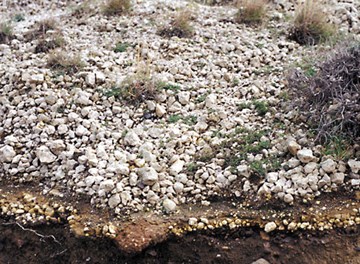
photo by sally king "Farming is the backbone of Pueblo culture and traditions.…our lifeline. When we farm, we have food; When we farm, we have togetherness; When we farm, we have continued existence." Affiliated Pueblo Committee Despite the rugged landscape, scarce rainfall, short growing season, and temperature extremes of the Pajarito Plateau, the Ancestral Pueblo people successfully grew corn, beans and squash – the basis of their diet. Combining dry-farming techniques and locally adapted seeds, they devised ingenious techniques that helped their crops survive. 
photo by sally king By planting many small plots in areas with differing conditions, farmers increased the likelihood that at least some plots would produce food. Climatic conditions vary a great deal within short distances up and down the canyons and mesas of the Pajarito Plateau. A field planted at a higher elevation is likely to receive more rainfall but might be hit by a early frost. One planted lower benefits from a longer frost-free growing season, but might not get enough rainfall. 
NPS Collection Volcanic eruptions in the Jemez Mountains created fields of gravel in many areas. Pumice, lightweight and porous, absorbs water from melting snow or rainfall. Ancestral Pueblo farmers discovered that places with pumice mulch were good for growing crops. In the springtime, water stored in pumice provided moisture to germinating seeds and delicate young plants. Later in the growing season, the pumice reflected heat and slowed evaporation. 
Bandelier Museum Collection Farmers also created earth terraces, small check-dams, areas of pebble mulch, grid gardens, and, where possible, irrigation ditches. These features helped collect and conserve rainfall, captured valuable soil, and slowed erosion. Pebble mulches also helped warm the soil in spring and prevented weeds from competing with the crops. Early in the Ancestral Pueblo people’s occupation of the Pajarito Plateau, families moved frequently, often farming a plot of land for less than a single generation. Later, families built larger communities such as Tyuonyi (Qu-weh-nee) and Yapashi. During the growing season, farmers moved into field houses to tend their crops. When farming conditions required a move, the farmers just relocated their field houses rather than moving the whole village. 
photo by sally king |
Last updated: April 28, 2025
